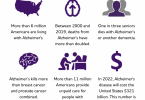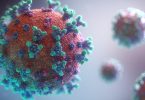By Hannah Green
Boston University News Service
Camille Williams’ entire life shifted with a single blood test during a routine physical exam in middle school.
“[The pediatrician] called my mother and said, ‘How is your child living? Her blood level is at a four, it needs to be at least a 14,’” Williams said.
Williams was diagnosed with Diamond–Blackfan anemia. Her bone marrow was not making enough red blood cells. Williams’ organs were essentially starved of air, as she was not producing enough hemoglobin to support her body.
Without realizing it, Williams was born with the condition and lived with symptoms for years — symptoms including constant fatigue and stunted growth.
“We always just said, ‘oh, certain people in my family are short,’ and ‘oh, I just like to fall asleep in the car because I have motion sickness,’” Williams said.
Once she was diagnosed, Williams began to hope she would find a cure for her disease. She joined the bone marrow registry seven years ago. A bone marrow transplant replaces damaged blood cells with healthy cells from a matching donor. But for Williams, finding a donor was difficult.
As an African American woman, Williams has only a 23% chance of finding a donor on the bone marrow registry, according to data from the National Marrow Donor Program. This is lower than any other racial group, including White (77%), American Indian or Alaskan Native (57%), Hispanic or Latino (46%) and Asian or Pacific Islander (41%). The disparity is due to two factors: low participation in bone marrow donation by the African American community and the genetic diversity of this group.
Be The Match, run by the National Marrow Donor Program, leads the largest marrow registry in the world. Spokesperson Erica Sevilla said Be The Match has 22 million donors on its registry. Only 4% of those donors identify as Black.
Low participation is not the only reason it is more difficult for Black patients to find a donor.
Populations are still seeing the impact of colonization and migration in the stem cell registry. According to a 2003 study in Human Immunology, people of African descent have greater genetic diversity due to colonization and migration patterns. This increased genetic diversity makes it more difficult to find an HLA match.
“Think of the transatlantic slave trade where millions of Africans were taken to South America, Central America [and] North America,” Sevilla said. “And then you have the intermixing of populations there. African Americans have more diverse tissue types than somebody of European heritage.”
Almost every cell in the human body is dotted with HLA markers — small proteins that help your body identify its own cells and attack foreign bodies. A donor must have a very high level of HLA match to the recipient, so the body accepts the new, working blood cells.
As the world population becomes increasingly diverse, donor registries have turned to college campuses.
“College students want to help and want to do something really meaningful with their time and with their lives,” Sevilla said. “It’s at a really good time before starting a family and everything else to want to do something just to help others.”
Be The Match started opening college chapters a few years ago in cities with diverse populations. At first, they weren’t sure if anyone would sign up. A week long campaign at the University of Texas Rio Grande Valley showed them this just might work.
“We had some 1,000 people join the registry over the course of a week by engaging all the students and faculty [and] being able to do presentations and classes about the science behind HLA matching,” Sevilla said.
Be The Match has more than 100 student groups running recruitment campaigns at colleges and universities nationwide. These groups have recruited enough donors to facilitate 600 transplants.
Most recently, Be The Match partnered with 13 universities for a Match Madness campaign to recruit 3,000 donors by the end of April. This play was targeted toward college athletes and university students.
At the end of last year, University of Maryland junior Kene Okafor joined his campus’ Be The Match organization.
Okafor is studying neurobiology and physiology on the pre-med track. He wanted to get involved after witnessing the racial disparities of healthcare firsthand. Several of his family members have also been sick with cancer, so recruiting donors felt like a personal mission.
Okafor said his student group held one recruitment event and signed up 18 new donors. The students hope to hold more events in the coming months as campuses reopen and students return in the fall.
Even as recruitment campaigns pop up on college campuses, meeting the needs of the Black community remains a struggle.
Sevilla said recruiting the same number of white and Black donors will not create an equal chance of finding a donor. Because of the Black population’s genetic diversity, more Black donors are needed.
“If we want the chances of finding a match to be as high as the chances that a white patient faces, then we need even more Black donors because of the diversity of tissue types,” Sevilla said.
Each new generation is also becoming more genetically diverse, making it harder to find a perfect HLA match.
“Last year, 43% of the new registry members we added who were between the ages of 18 to 35 had brand new HLA typing, meaning they had no other matches on the registry,” Sevilla said. “But when you look at the Black population within that number, 76% had a unique HLA type.”
Despite these obstacles, recruitment programs offer hope to patients like Williams. Finding a donor will allow her and other seriously ill patients to live without disease symptoms and monthly blood transfusions.
“If you even have an opportunity to save a life, why wouldn’t you?” Williams said. “If you are a match for someone, that person is at the brink. They’re in the hospital day in and day out. This is their last hope. If you could save them, why wouldn’t you sign up?”






[…] News Read More: College students combat racial disparities in bone marrow donation […]